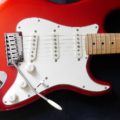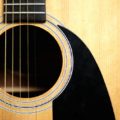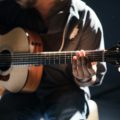The guitar is an incredibly versatile instrument that allows you to play a wide range of music, from simple love songs to heavy metal. It is relatively easy to play once you have mastered the basics, although it does require hard work and formal training to fully unlock its potential.
Before diving into playing the guitar Strumming Practicing The Guitar - Practicing the guitar takes time and dedication. Learning to play the instrument requires consistent practice, but it doesn't guarantee that you'll become a rock star. Nonetheless, with regular practice and skill development, you can still achieve proficiency. There are two methods to start strumming a guitar: using your fingers or using a pick. Find a… , it’s important to familiarize yourself with some basic terms and components of the instrument:
- Strings: A standard guitar has six strings, each producing a different pitch. They vary in size and note value. In standard tuning, the thinnest and highest-sounding string is the first string, which is an E note. The second string is thicker and lower in sound, tuned to a B note. The third string is a G note, followed by a D, an A, and finally, the thickest and lowest-sounding string is another E. The first and sixth strings, when in tune, produce the same note but at different pitches.
- Frets: Frets are the small metal strips that run perpendicular to the strings on the neck of the guitar. They divide the neck into sections from top to bottom. Each fret represents a specific note, and placing your fingers on a string between two frets allows you to play a note. As you move higher up the fretboard, the notes produced become higher in pitch. Each fret represents a half-step increase in pitch compared to the previous one.
Other important terms to remember:
- Headstock: The top part of the guitar where the tuning pegs are located.
- Nut: A small piece of material found at the junction of the headstock and the neck. It has grooves that guide the strings to their respective tuning pegs.
- Neck: The long and slim part of the guitar that holds the frets and strings. It is where you place your fingers to play individual notes or form chords.
- Body: The large base of the guitar that is connected to the neck. The body can vary depending on the type of guitar. Acoustic guitars Ibanez Acoustic Guitars - Ibanez acoustic guitars are among the leading guitar brands in the market. These guitars are incredibly versatile and cater to a wide range of music genres. With so many guitar brands available, it can be challenging to choose just one. However, the Ibanez guitar stands out for its robust qualities and exceptional sound. About Ibanez… typically have hollow bodies with a circular sound hole in the middle to project the sound. Electric guitars, on the other hand, have pickups instead of sound holes to capture and amplify the sound of the strings.
- Tuning Keys: These keep the strings in place and allow you to adjust the pitch of each string by turning the corresponding tuning peg.
- Bridge: A small piece of hardware located at the base of the body. It is used to anchor the strings and help transmit their vibrations to the body.
Understanding these terms and components will provide you with a solid foundation as you embark on your guitar-playing journey.
Manuel Marino is a seasoned Senior Producer, Music Composer, and Artist with over a decade of experience. He specializes in branded entertainment across various mediums, including video games, films, and advertising campaigns. With 20+ years as a game music composer, Manuel has worked on numerous platforms, creating diverse orchestral soundtracks. HIRE ME


 Manuel is a passionate, driven, and techsavvy AV technician,
Manuel is a passionate, driven, and techsavvy AV technician, 










